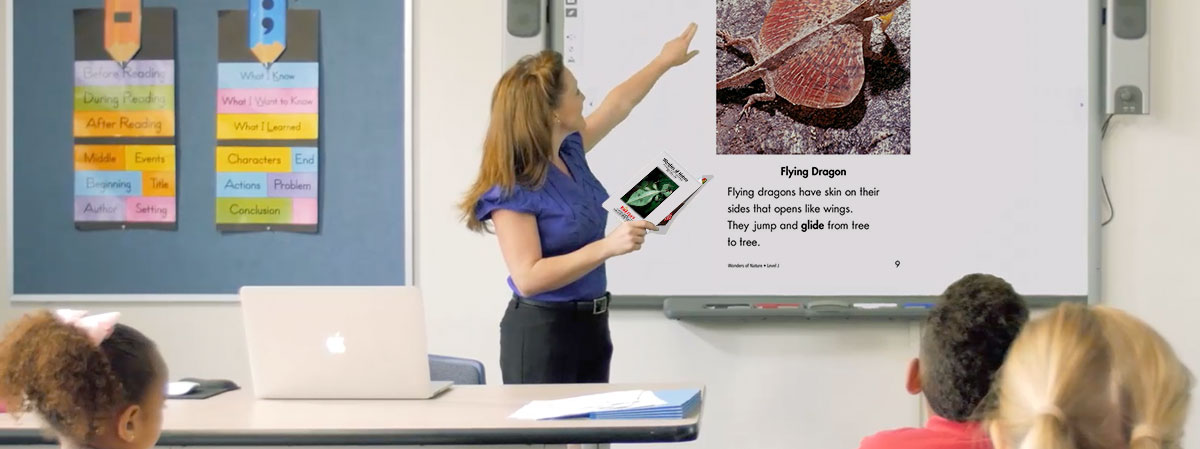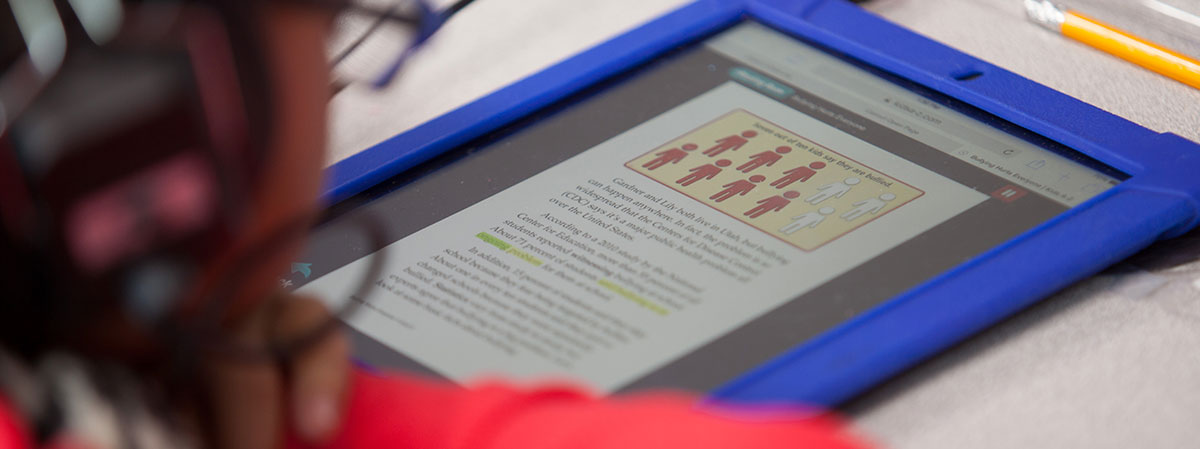In our Experience Raz-Plus series, we show you what it’s like to use Raz-Plus as a teacher and a student and demonstrate the many different ways that Raz-Plus can strengthen the connection between what is being taught and what students practice. In Part 1, you take on the role of a teacher using Raz-Plus to enhance how her students learn to read!

Whole Class Instruction
The bell rings and your third-grade students are settling in. As your students gather their materials, you greet them and explain the day’s goals: reading and summarizing the projectable book and practicing comparison and contrast skills.
The lesson begins with a whole-class reading activity. You read the multilevel book Wonders of Nature (O, R, U) and use projectable tools to highlight sentences, stamp vocabulary words (burrow, glide, larvae, nature, silk, tropical, underground, wetlands, wonders), and draw lines to connect ideas and details.
In the next part of the lesson, ask students to write a short summary of the book they just read. Then, invite a few students up to the front of the class to share their summary and point to parts of the text that helped them write it.
After students practice summarizing, draw students’ attention to various differences and similarities amongst the animals depicted in the book. Ask a few students to interact with the projectable to highlight relevant details about those characteristics.
Then, you distribute the Venn diagram that helps students organize details about similarities and differences between the sea dragon and the flying dragon. Students fill it out with text evidence that they discussed, and to conclude the whole class lesson, you review the Venn diagram with students while interacting with particular passages from the projectable book.

Small Group Activities
Now that students have read a book, summarized it, and practiced comparison and contrast as a whole class, you direct them to break off into small groups or work individually to read another text of their choice about a similar topic. You also identify a group of reluctant readers who will participate in a small-group session, where you read a book on a related topic, Animal Discoveries, out loud while students follow along and ask questions.
While conducting the small group session, other students form small groups of 4 and use Discussion Cards to continue exploring Wonders of Nature. Students collaborate to answer questions about author’s purpose, cause and effect, main idea and details, and consider why there are so many different and unusual animals in the world.
A few confident readers put on their headphones and listen to a new book, of their choice, at their reading level. As students listen on tablets or computers, they use the same digital tools that you demonstrated earlier to practice active reading strategies on their own. Some take the time to record themselves reading the book and send it to you to review their fluency.
You conclude class by reminding students to log in to KidsA-Z.com when they return home and to complete the assignment in their My Assignment portal.
Stay Tuned for Part 2
This is just one example of how you can use Raz-Plus to differentiate whole class and small group instruction. In Part 2, one of your students uses Raz-Plus’ interactive online reading tools to hone comprehension skills and acquire content knowledge.
Ready to try out Raz-Plus in your classroom?
To check out more of Raz-Plus’ digital, projectable, resources, get a free 2-week trial today!


